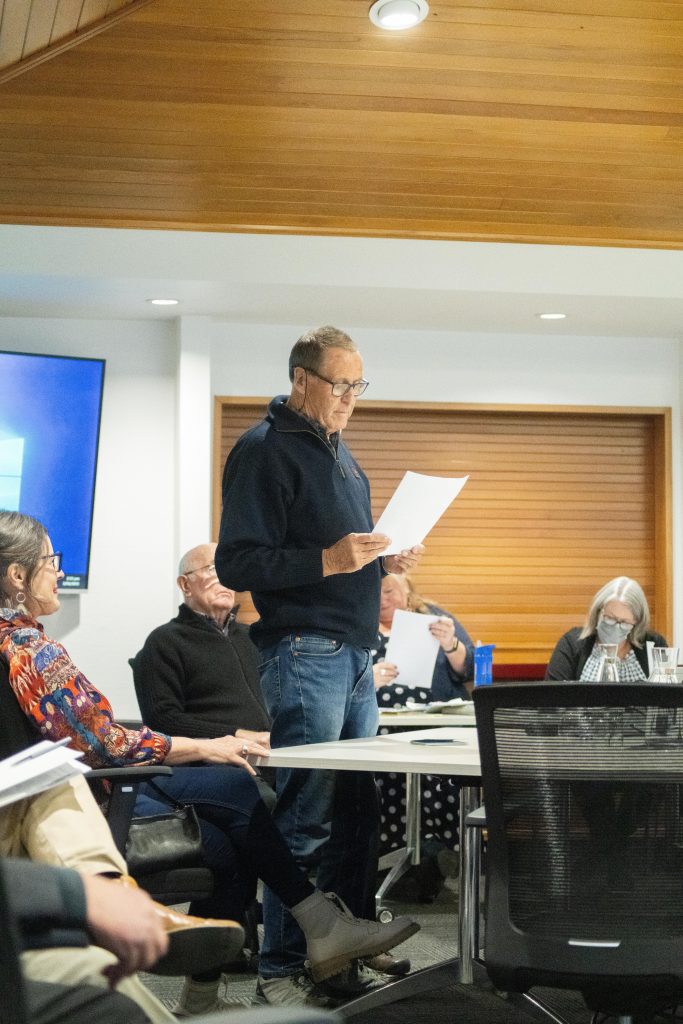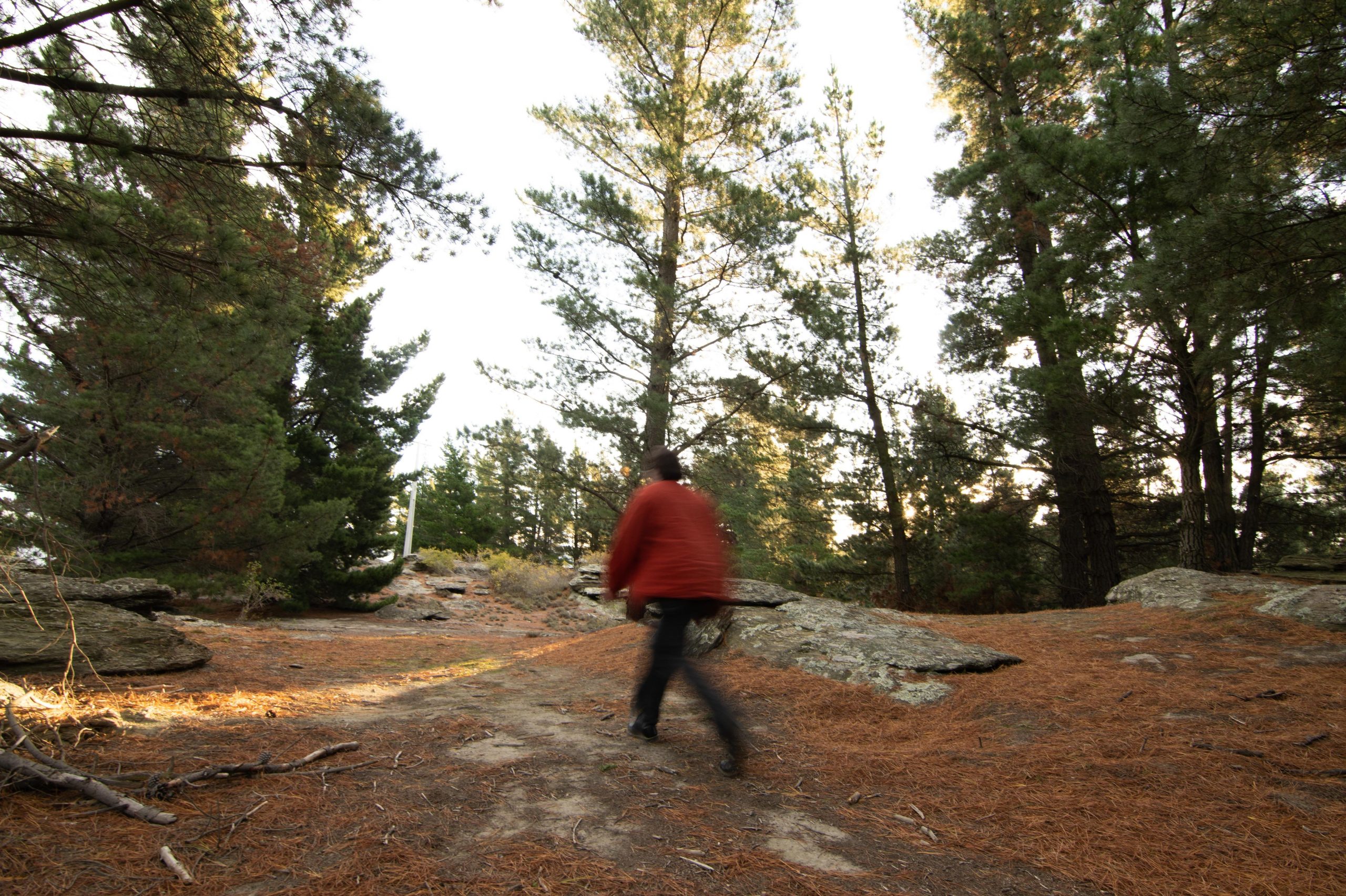The future appearance of the Half Mile reserve, at the southern entrance to Alexandra, was partially decided at the Vincent Community Board (VCB) meeting on Tuesday.
At the public forum at the beginning of the meeting, Half Mile resident and long-time opponent of removing the pine trees on the reserve Ken Churchill spoke.
Planting poplars was ‘‘ludicrous’’ due to the massive leaf drop in autumn affecting neighbours. Kowhai would be a better shelter tree, he said.
Water source and irrigation needed to be in place before the planting started. It seemed unfair to use VCB money for the project, and to rely on volunteer groups to plant thousands of plants highlighted a lack of funding, Mr Churchill said.
Central Otago District Council (CODC) parks and recreation manager Gordon Bailey said the existing pine trees on the reserve would be felled in the first two weeks of next month.
He presented two options, A and B,for replacement planting, which were intended to restore the reserve back to an authentic Central Otago landscape as agreed by the VCB last year.
Both landscape plans prepared for the council by consultants Boffa Miskell propose planting native species across the site.
The more expensive option has a row of poplars on the northern boundary, with native shrubs and trees in front. The poplars would give shelter to the native plants initially and would be removed in 8-10 years once the other plants were wellestablished. However, the poplars added $10,000 to the cost of planting and there would be more expense when they were cut down. Areas for a community garden, aplace for new citizens to plant the trees they are given at their ceremonies and for Trees for Babies, were included in the plans.
Trees for Babies is a longterm tree-planting project the Alexandra Rotary Club has been running since 2005, which has trees planted at various parks and reserves around town.

Cr Tracy Paterson said her personal experience with poplar trees was not great and suggested another variety should be considered for the shelter belt, ifthat option was chosen.
She was also concerned that when the shelter belt reached its proposed life span of 8-10 years, the decision to remove it could end up back at the VCB.
‘‘What can we do to protect both residents and the council so there is no confusion about it? I don’t want the community upset.’’
Mr Bailey said there could be a line item in the next long-term plan to remove the trees.
Cr Paterson said if option B, which included the shelter belt, was agreed on, she wanted the community involved in the choice of tree for the shelter belt.
Cr Martin McPherson said his major concern was that the pine trees were coming down next month and there was no secure funding for the replanting plans.
CODC group manager community experience David Scoones said there was funding in the long-term plan and council reserves. Staff would work to find external funding.
Cr McPherson said it was a council initiative and the cost should be spread across the district.
‘‘The decision was made at a council level but the cost is coming from the VCB.’’
How to ‘‘bury the hatchet’’ between Half Mile residents and the board was a concern.
‘‘There is amajor chasm between what we are proposing and what the community want,’’ he said.
There were no kowhai on the plan, yet it was indigenous to the area and they should be encouraging their planting, Cr McPherson said.
Cr Roger Browne said while there could be a typical Central Otago landscape at the top of the reserve, there was scope for more ornamental planting on the lower reaches of the steep site. It could be a decorative entrance providing interest to people coming into Alexandra.
Mr Bailey said the plan was based on what the community was consulted on last year.
The plan was indicative and not a detailed planting plan.
There were other fastgrowing trees that could be planted instead of poplars. Planting on the lower areas would need consultation with Waka Kotahi NZ Transport Agency due to shading of the state highway that ran past.
Mr Scoones said the community could be consulted about what plants should be put in.
Mr Bailey said some new citizens did not have a suitable or permanent site for their trees and could plant them at Half Mile reserve.
To get the planting established, a header tank with a network of irrigation for the site could draw from the Old Golf Course Rd town water supply.
Access through a neighbouring property had already been discussed, he said.
A provisional sum for irrigation had been included in the estimated cost. Once the plants were established, the irrigation system would be removed.
Weed control and any additional site tidy-up would be done next summer, before planting began in the following winter, Mr Bailey said.
Planting was expected to start in winter nextyear and cost up to $180,000.
Cr McPherson moved that option B be approved with engagement from the community on shelter tree options along the boundary and within key walking areas.
The resolution was seconded by Cr Browne and passed unanimously.
For nearly 18 months, debate has surrounded the pine trees on the CODCowned reserve, emotions flaring on both sides.
The trees are deemed a significant seed source for wilding pines in the area, and in October 2021 were earmarked by the CODC and Central Otago Wilding Conifer Control Group for removal.
At the time, a lack of public consultation raised the ire of residents in the Bridge Hill area who used the reserve for recreation.
Public submissions on the issue were received last year, and in January, the VCB agreed to the removal of wilding conifers at the reserve, but in a staged approach. The matter was referred to the CODC meeting in February for confirmation it complied with council policy. Mayor Tim Cadogan used his casting vote to reject the decision.
At last month’s meeting, the council policy on wilding pines was changed toreflect the intention that wilding pines would be eradicated, not managed, and removed in a single operation.





